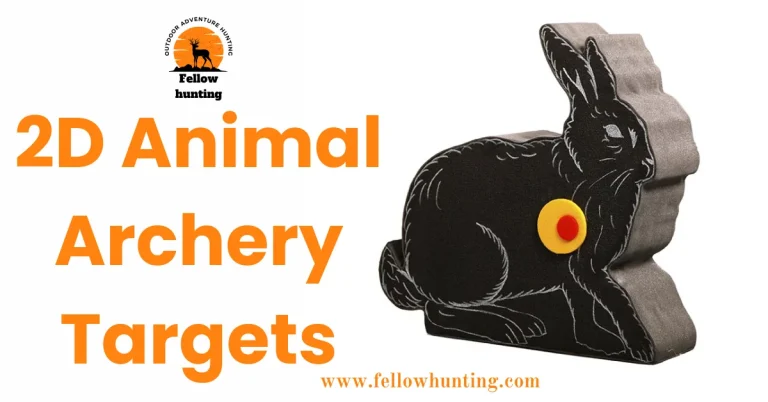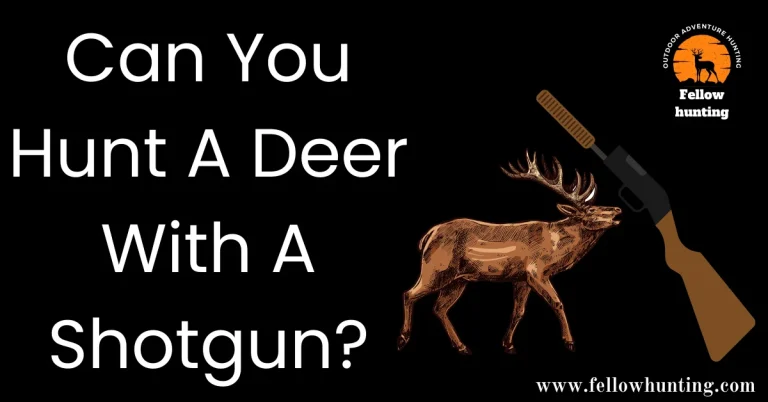A Thrilling Quest: Can You Hunt With a Recurve Bow? 11 Facts You Must Know
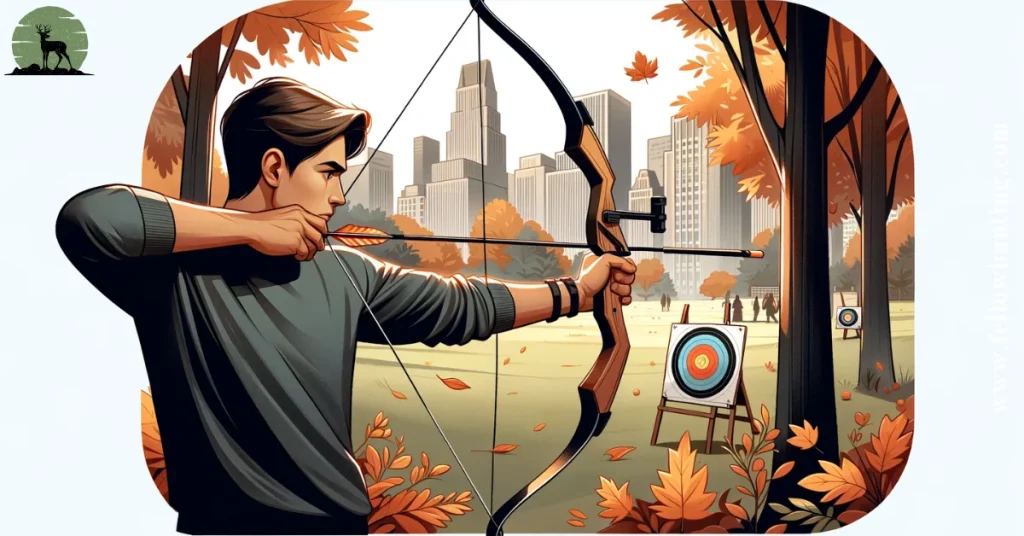
In a world where technology often takes center stage, the recurve bow stands as a testament to the enduring appeal of tradition. Archery hunting has seen a significant resurgence in recent years, and much of this rekindled interest is thanks to the classic recurve bow. It’s a blend of nostalgia and challenge, pulling hunters away from the high-tech gadgetry of modern hunting bows and into the more primal and skillful roots of archery.
Can You Hunt With a Recurve Bow?
The recurve bow’s elegance lies not in complexity but in its simplicity and the direct connection it offers between the archer and their quarry. This isn’t to say that modern hunting bows don’t have their place. They do, with their cams and pulleys providing speed and power with less physical strain. However, recurve bows demand a purer form of skill, where the archer must intimately understand their equipment and their capabilities.
The Recurve Bow: A Study in Dynamics
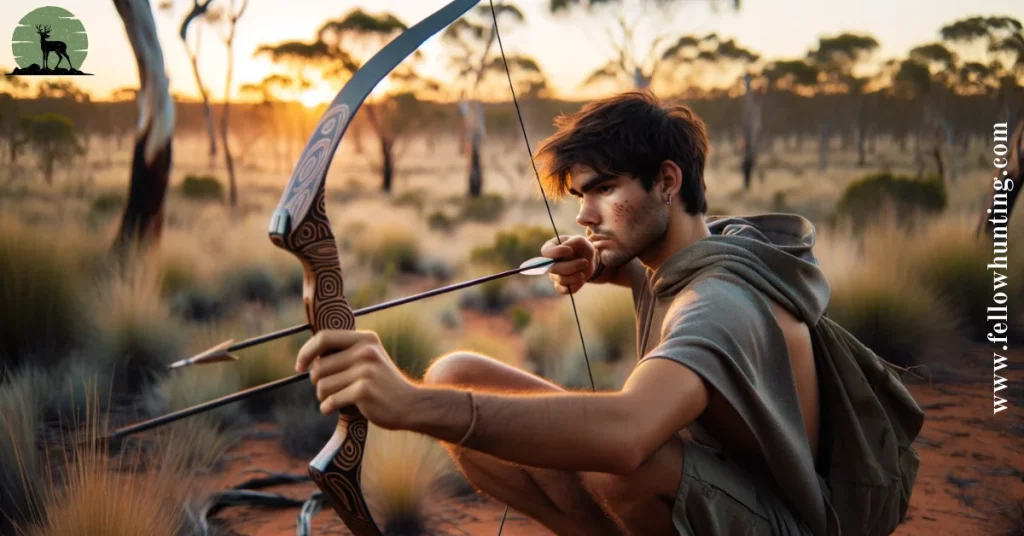
To appreciate a recurve bow, one must understand its anatomy. At its core, a recurve bow is distinguished by its limbs that curve away from the archer when unstrung. This design imparts additional energy to the arrow upon release, offering a speed boost that belies the bow’s unassuming appearance.
Limbs and Riser: The Backbone of the Bow
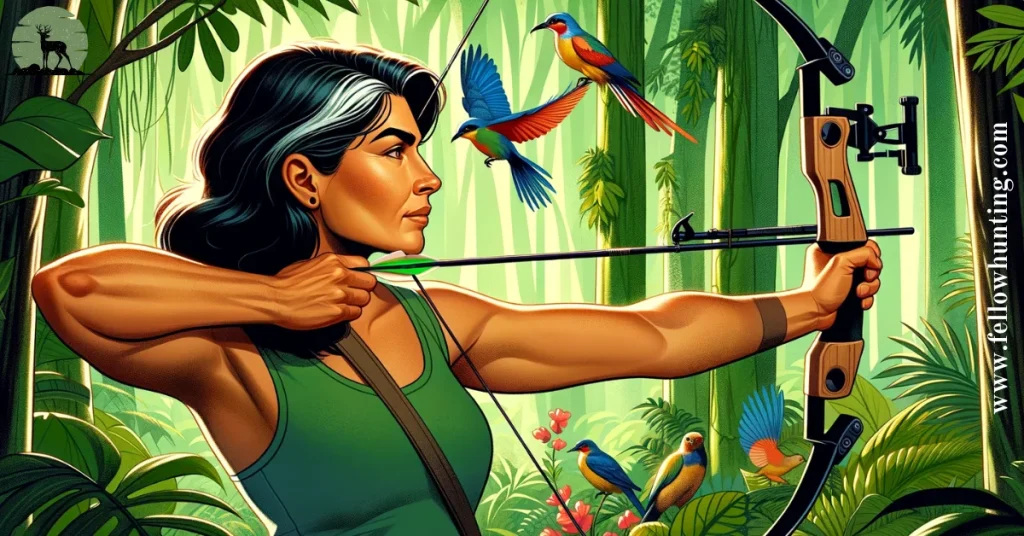
The limbs are the muscles of the recurve bow, flexing and snapping back to life as the string propels the arrow forward. They are connected to the riser, which acts as the backbone, the central piece that must be both strong and stable. It’s the riser where you’ll often find the most personalized touches, from ergonomic grips to various attachment points for accessories. The marriage of limbs and riser is a delicate balance, a dance of flexibility and strength, creating a bow that is uniquely responsive to the archer’s touch.
String and Arrow Dynamics: The Heartbeat of the Shot
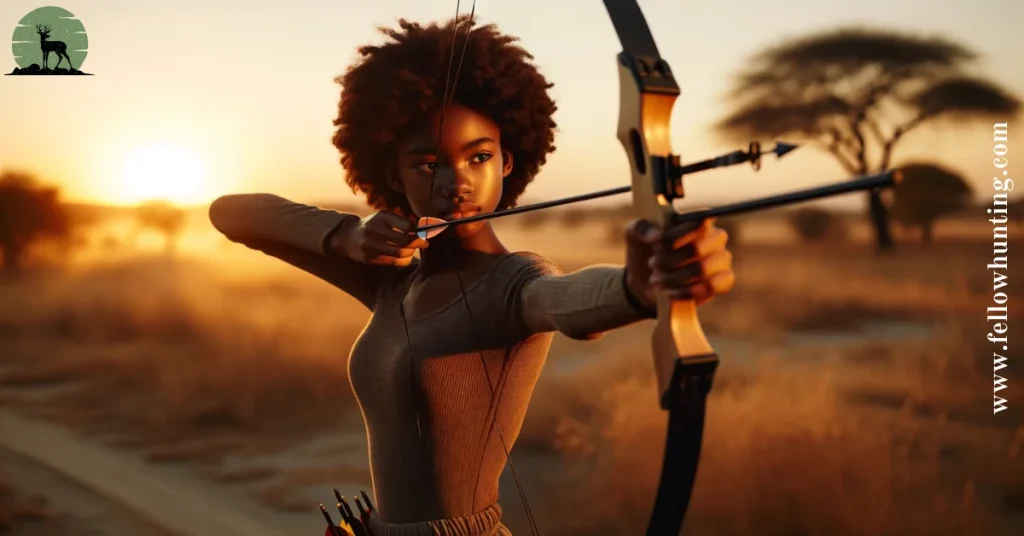
The string is the heartbeat of the recurve bow, a lifeline that channels the archer’s intent into the arrow’s flight. Its role is crucial, and the choice of string material can greatly affect performance. Modern materials offer advantages in speed and durability, but they also require careful maintenance.
The arrow, meanwhile, is the messenger. It must be perfectly matched to the bow in weight, length, and stiffness to ensure that it flies true. Arrow dynamics are a science unto themselves, with factors like fletching and point weight influencing everything from accuracy to penetration.
The recurve bow might be a tool from the past, but its performance is timeless. It challenges the archer to be better, to understand the wind like a sailor and the terrain like a tracker. Hunting with a recurve bow isn’t just about the harvest; it’s about the journey, the skill, and the connection to a tradition that has echoed through the forests for millennia.
When you step into the woods with a recurve bow, you’re not just carrying a weapon; you’re shouldering a legacy. Each shot is a conversation with history, a testament to the skill and patience that hunting with such a pure form of archery demands. It’s a path less traveled in the modern hunting world but one that is rich with reward for those who choose to walk it.
Navigating the Legalities: Understanding Bow Hunting Regulations
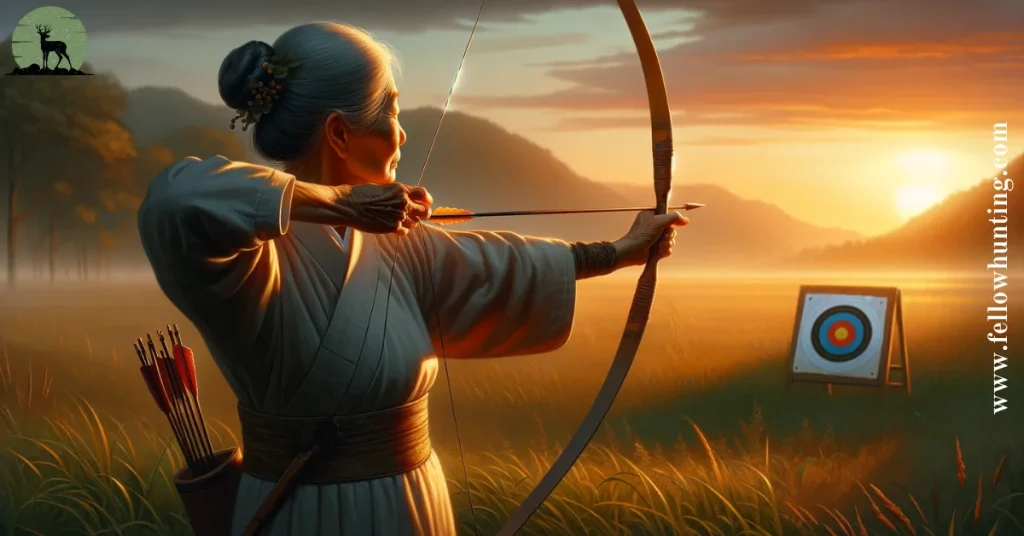
Bow hunting is a practice steeply rooted in both tradition and law. Before venturing into the woods with a recurve bow in hand, it’s crucial to understand the legal tapestry that governs this ancient pursuit. Every region has its own set of regulations, often as varied as the landscapes themselves. Hunting seasons are typically established to preserve wildlife populations, ensuring that hunters only take to the field when species are at their most sustainable numbers.
Then there’s the matter of permits and licenses. The philosophy here is straightforward: one must earn the right to hunt. Securing the necessary documentation is a rite of passage in itself, a step that reinforces the hunter’s commitment to ethical and responsible wildlife management. It’s not just about legality; it’s a matter of honor, respect for the game, and the acknowledgment of one’s duties as a steward of the natural world.
Gearing Up: Preparing for the Hunt with a Recurve Bow
Choosing the right recurve bow is like finding a dance partner it must be a good fit, or you’re in for a clumsy experience. The bow must suit not only your physical stature but also your strength and skill level. And it doesn’t end with the bow. The gear and accessories you choose are more than just adornments; they’re tools that enhance your efficiency and effectiveness. From the right kind of arrows tailored to your bow’s draw weight to the quiver that will hold them, each piece of gear plays a critical role in the hunt.
Mastering the Craft: Skills and Techniques for Recurve Bow Hunting
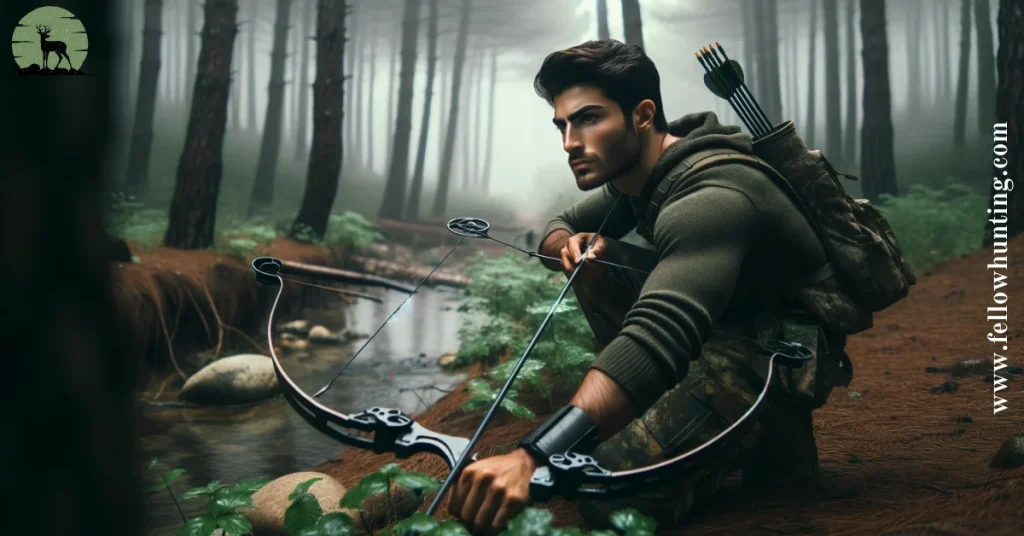
With gear in hand, the focus shifts to the hunter’s form, stance, and posture, which form the foundation of effective bow hunting. There’s a balance to be struck, as a stable base allows for precise control over the bow. The power of a shot doesn’t just come from the limbs of the recurve bow; it comes from the archer’s core.
Aiming and shooting mechanics are the culmination of the hunter’s art. It’s a fluid sequence of movements, each one building upon the last, culminating in the moment the string is released and the arrow takes flight. This isn’t a process that succumbs to haste; it’s a slow, deliberate dance that can feel almost meditative. When executed correctly, the results speak for themselves: a clean shot, a humane harvest, and the deep satisfaction that comes from mastering a skill as old as time itself.
In the world of hunting, few things are as challenging or as rewarding as mastering the recurve bow. It’s a journey back to the roots of hunting, where skill, patience, and respect for the game reign supreme. With the right preparation, knowledge, and respect for the laws that govern the hunt, this ancient practice continues to thrive, a testament to the enduring relationship between humans and the wild.
The Archer’s Ritual: Setting Up a Practice Range

Target practice is the archer’s ritual, turning motion into second nature. Setting up a practice range is where the alchemy happens, where the archer hones their craft. It’s not just about sticking arrows into a bale of hay; it’s about creating a space where you can simulate various hunting scenarios. Distance markers, variable wind conditions, and different target types can all play a part in preparing for the unpredictability of a live hunt.
Refining the Art: Practice Drills and Routines
Practice is more than repetition; it’s a deliberate improvement. Establishing drills and routines that challenge both precision and speed is key to growth. Drills should be designed to mimic the pressures of a hunt, from quick-draw scenarios to long holds that test your strength and focus. Consistent routine underpins progress, turning once cumbersome movements into intuitive reactions.
The Wilderness Encounter: Tracking and Stalking in the Hunt
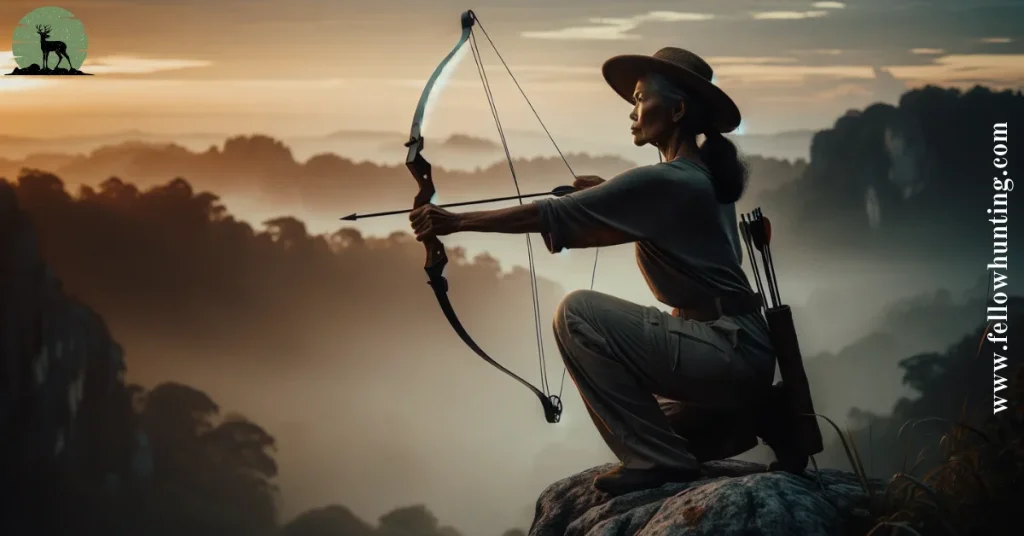
The hunting experience with a recurve bow is a dynamic dance with nature. It’s about becoming a shadow in the forest, learning the subtle art of tracking and stalking. This aspect of hunting is a testament to the hunter’s understanding of their prey, recognizing tracks, interpreting signs, and moving silently through diverse terrains. It’s not just about the final shot; it’s about the entire journey that leads to that decisive moment.
The Respectful Harvest: Field Dressing and Ethical Hunting
Once an animal has been taken, the ethical hunter must ensure that the harvest is not wasted. Field dressing is a critical skill, ensuring that the meat is preserved and honored. This step of the process is not for the faint of heart, but it’s a powerful reminder of the hunter’s place in the natural order, not above, but a part of it.
In Tune with Nature: Wildlife Movements and Habitat Conservation
Understanding prey movements is essential for successful hunting with a recurve bow. It requires a deep knowledge of animal behavior and the environments they inhabit. Conservation goes hand in hand with this understanding. Hunters are often among the most passionate advocates for habitat preservation, recognizing that sustainable hunting practices are only possible if we maintain healthy ecosystems.
The Recurve Bow: A Legacy of Maintenance
Every recurve bow carries a legacy, and maintenance is key to preserving it. Regular cleaning, proper storage, and attentive care of the string and limbs will ensure the bow continues to perform at its peak. Maintenance isn’t just about preserving functionality; it’s about respecting the craft and the history of the bow itself.
Echoes of the Wild: Tales from the Field
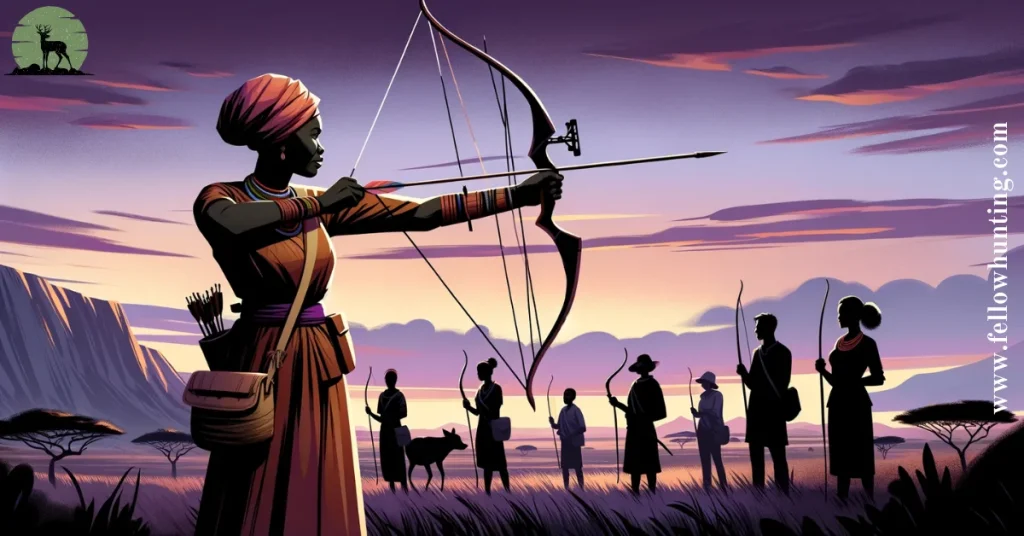
Every hunter’s first trip to the field with a recurve bow is a story etched in memory. And then there are the seasoned veterans, whose insights are as sharp as their aim. These tales from the field are more than just stories; they’re lessons steeped in experience, offering wisdom that can only be gained through the lived adventure of the hunt.
Embracing the Challenge: Patience and Precision in Recurve Hunting
Recurve hunting is not for the impatient. The challenge lies in the stillness, the silent moments of waiting, where patience becomes as crucial as the bow itself. Precision, on the other hand, is the reward for that patience. It’s the small adjustments, the controlled breathing, and the focus that turns an attempt into a success.
Overcoming the Hurdles: Common Challenges in Recurve Bow Hunting
But the path of the recurve hunter is not without its obstacles. From the frustration of missed shots to the physical demands of drawing the bow, each challenge is a mountain to be scaled. Addressing this head-on, with grit and determination, is part of the hunter’s journey, where every misstep is a lesson in disguise.
Elevated Tactics: Advanced Hunting Strategies with a Recurve Bow
For the recurve bow hunter, camouflage is more than concealment. It’s the art of becoming part of the landscape. Blinds, whether natural or artificial, become fortresses of solitude from where the hunter waits for the perfect shot. Weather and environmental factors are always in play, changing the game in ways that demand adaptability and an intimate understanding of the elements.
The Bond of the Bow: Community and Culture in Hunting
Hunting with a recurve bow isn’t a solitary endeavor; it’s a thread that connects individuals to a larger community. Joining hunting groups opens doors to shared experiences and collective knowledge. Within these circles, ethical discussions flourish, as they are central to the sport, ensuring that the culture of hunting remains respectful and sustainable.
From Field to Feast: The Joy of Preparing Game Meat
The journey of the hunt extends to the table, where nutrition and cooking merge. Preparing game meat is an art form, honoring the animal with recipes and techniques that enhance its natural flavors. It’s a primal satisfaction, a connection to the land that can only be savored by those who have experienced the full cycle of the hunt.
The Gift of the Wild: Sharing the Bounty
Beyond personal sustenance, there’s a tradition of sharing the bounty with the community. Hunters often donate a portion of their harvest to those in need, embodying the spirit of charity and the essence of the harvest. It’s an act that reinforces the hunter’s role within society a provider, a conservationist, a keeper of traditions.
Hunters as Stewards: Conservation and Wildlife Management
Recurve bow hunters play a pivotal role in conservation and wildlife management. By adhering to regulations and participating in sustainable practices, they contribute to the balance of ecosystems. Wildlife management isn’t just a responsibility; it’s a privilege that hunters hold dearly, acting as guardians of the natural world they so cherish.
The recurve bow serves as a silent testament to these truths, an emblem of challenges met and overcome, of the camaraderie found in shared struggles, and of the respect given to the creatures that grace the earth. It is a symbol of the hunter’s pledge: to preserve, share, respect, and thrive within the ancient cycle of man and nature.
Harnessing Technology in Bow Hunting: Gadgets and Tools
In a sport as ancient as bow hunting, technology might seem out of place, but it has found its niche. Today’s hunters are equipped with gadgets that range from range finders to high-tech bow sights. These tools don’t just add convenience; they enhance the hunt, making it safer and more successful.
Digital Camaraderie: Apps and Online Communities for Bow Hunters
Then there are the apps and online communities, digital havens where hunters share tales, tips, and camaraderie. These platforms have transformed solitary pursuits into shared experiences, allowing hunters to exchange knowledge and stay connected with like-minded enthusiasts across the globe.
Safety First: Ensuring a Secure Bow Hunting Experience
However, with all the excitement technology brings, safety remains paramount. Handling and transportation of bows and arrows must adhere to strict guidelines to prevent accidents. Moreover, hunters are always a mishap away from danger. Thus, emergency procedures are not just words on paper. They’re potential lifesavers.
Bowhunting as a Family Legacy: Teaching the Younger Generation
Bowhunting can be a thread that weaves family members together, passing on skills from old hands to young enthusiasts. It’s in these shared moments that traditions are maintained, and memories are created. Family hunting trips can serve as rites of passage, a passing of the torch that solidifies bonds and celebrates heritage.
Seasonal Preparedness: Adapting Gear and Tactics
With the changing of seasons, the landscape of hunting shifts. Adapting gear for winter’s chill or autumn’s camouflage is just the tip of the iceberg. Seasonal hunting techniques also evolve as animals change their behavior. The savvy hunter knows to adjust strategies accordingly, staying one step ahead of the game.
Exploring Global Hunting Traditions: Bowhunting’s Worldwide Tapestry
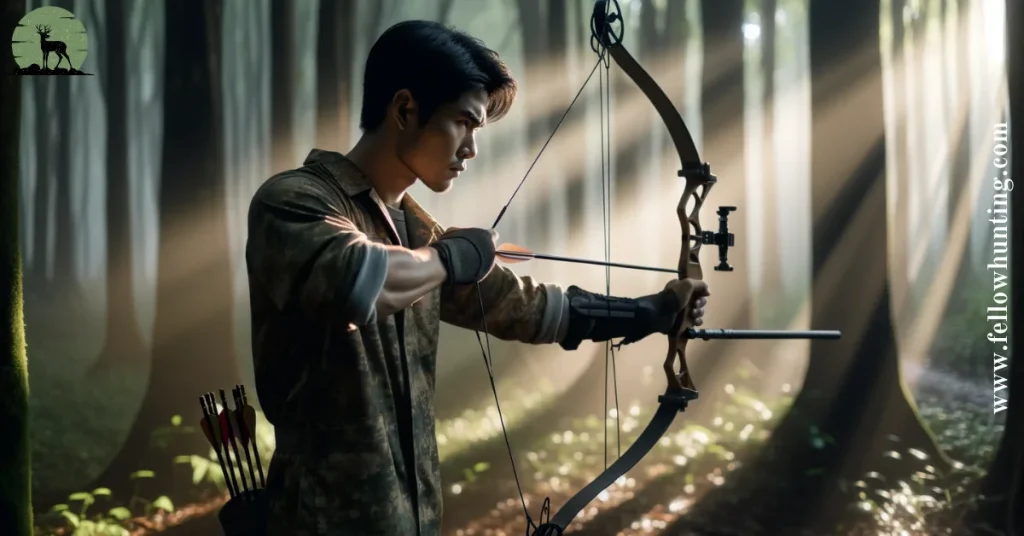
Bowhunting holds a unique place in cultures around the world, from the plains of Africa to the forests of Europe. Understanding these global traditions isn’t just about curiosity; it’s about respecting the rich tapestry that makes up the hunting community. Each culture adds a chapter to the broader story of bowhunting, highlighting its universal appeal and enduring significance.
The Economics of Bow Hunting: Investment and Reward
Finally, bow hunting, like any passion, comes with its costs. From purchasing initial equipment to ongoing maintenance, there’s a financial aspect that cannot be ignored. Conducting a cost-benefit analysis can guide new hunters in their investments, ensuring that they not only buy quality but also maximize their experiences without breaking the bank.
These diverse facets of bowhunting reflect its complexity and depth. It’s a sport that honors its past while embracing the future, cherishes family while building communities, and respects tradition while acknowledging the role of technology. Bowhunting is more than a pursuit it’s a convergence of heritage, innovation, and camaraderie, all drawn together by the timeless arc of a recurve bow.
The Future of Bow Hunting: Aiming at Innovations
The world of archery is always on the move, constantly pulling back the string for the next big innovation. The future looks bright, with advancements in materials and design promising to make bows more efficient and accessible to all.
Preserving the Wilderness: Conservation Efforts in Bow Hunting
With every arrow released, there’s an unspoken vow to conserve the wild spaces that hunters cherish. The future of bow hunting is not just in the gear but in the hands of those who strive to protect the habitats and species they hunt. These conservation efforts ensure that the spirit of the hunt lives on for generations.
The Ethical Archer: Understanding Hunters’ Responsibilities
As guardians of tradition, hunters carry a weighty set of legal and moral obligations. This mantle isn’t just about following the letter of the law; it’s about embodying the ethos of hunting, respect for nature, fair chase, and community engagement. It’s about leaving a legacy of integrity for the future.
Conclusion: The Path Forward for Aspiring Bowhunters
For those with the recurve bow in hand and wilderness in heart, the journey has just begun. As we reach the end of our exploration, the message is clear: step into the woods, respect in soul, and bow in hand, for the story of hunting is yours to write.
Reflecting on the Essence of Recurve Bows
Recurve bows stand as a testament to the skill and spirit required in bow hunting. These venerable tools are not relics but symbols of a thriving culture. They tie the past to the present and open a path to the future of hunting, a future that respects the delicate balance between man, machine, and nature.
FAQs
Can I hunt all types of game with a recurve bow?
You sure can, but it depends on your skill level and the local laws. Recurve bows are versatile and can take down anything from small game to big bucks. However, you’ve got to make sure your bow has enough draw weight to do the job humanely, and you’re always playing by the rules.
How do I choose the right arrows for my recurve bow?
Choosing arrows is like picking a dance partner. They’ve got to match your moves. The arrow’s length and spine should be just right for your bow’s draw weight and length. Get this pairing wrong, and it’s like stepping on toes. But get it right, and you’re in for a smooth dance with your target.
Is it harder to hunt with a recurve bow than a compound bow?
Let’s say it’s a different ball game. A recurve bow demands good technique and strength because you’re holding the full draw weight yourself. It’s more about skill than technology, which can make it trickier but also way more satisfying when you hit that bullseye.
Do I need any special training to hunt with a recurve bow?
You bet! Think of it like riding a bike for the first time. You wouldn’t hit a mountain trail without learning to pedal first, right? The same goes for bow hunting. A bit of training goes a long way to help you understand the basics, nail your technique, and ensure you’re hunting safely and ethically.
- SCHNAUZER SHEDDING TIPS TO KEEP YOUR FURRY FRIEND’S COAT HEALTHY 2023 - November 24, 2023
- A Guide to Husky Puppies: Your Fluffy Companion Awaits - November 24, 2023
- Can Cats Eat Carrots? Unearthing the Truth - November 24, 2023


